 Charles-Georges Doucet Coqueley de Chaussepierre (1711-1791), Le roué vertueux, poëme en prose en quatre chants, propre à faire, en cas de besoin, un drame à jouer deux fois par semaine. A Lauzanne (The Virtuous Rake, a Prose Poem in Four Odes, Suitable for a Drama Performed Twice a Week, if Necessary) ([Paris: Claude-Antoine Jombert], 1770). Graphic Arts Collection GAX 2017-in process
Charles-Georges Doucet Coqueley de Chaussepierre (1711-1791), Le roué vertueux, poëme en prose en quatre chants, propre à faire, en cas de besoin, un drame à jouer deux fois par semaine. A Lauzanne (The Virtuous Rake, a Prose Poem in Four Odes, Suitable for a Drama Performed Twice a Week, if Necessary) ([Paris: Claude-Antoine Jombert], 1770). Graphic Arts Collection GAX 2017-in process
Both a lawyer and royal critic, Coqueley de Chaussepierre had a reputation as a comic. In 1770, he wrote Le Roué virtuous as a parody of the play L’Honnête criminel, ou l’amour filial (The Honest Criminal: Or, Filial Piety) by Charles-Georges Fenouillot de Falbaire (1727-1800). The bourgeois drama told the true story of Jean Fabre, who served a prison term for his religiously persecuted father. The public loved it but Coqueley was appalled and responded with this typographic joke.
Le Roue vertueux is composed exclusively of pieces of sentences, single words in no logical sequence, and the remaining punctuation. On the other hand, the first chapter or ode can be read: “Oh crime! Oh consoling horror! Oh peaceful agitation of the soul!”
The author wrote, “by putting nothing into it, we cannot criticize the style.” Later generations forgot about Fenouillot de Falbaire’s play and celebrated Coqueley de Chaussepierre’s typographic originality and the surrealist vision of the book.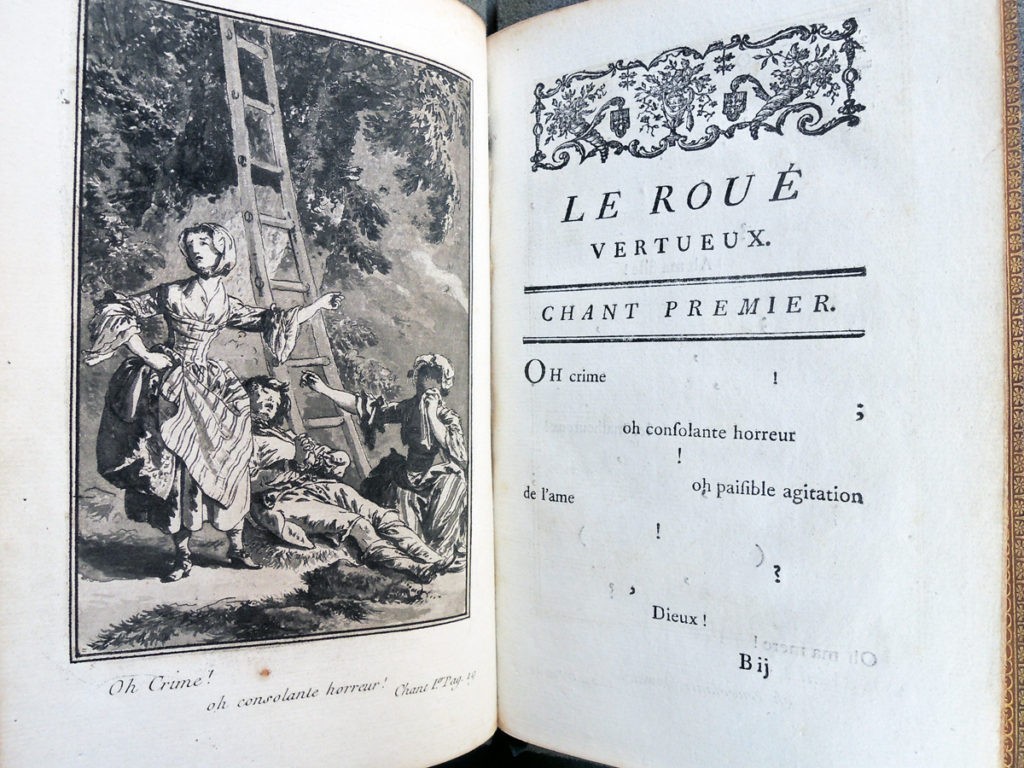
The book is also innovative in the five plates that divide the chapters, engraved and aquatinted by or in the style of Jean-Baptiste Le Prince (1734-1781). It is thought to be one of the first books to include aquatints.

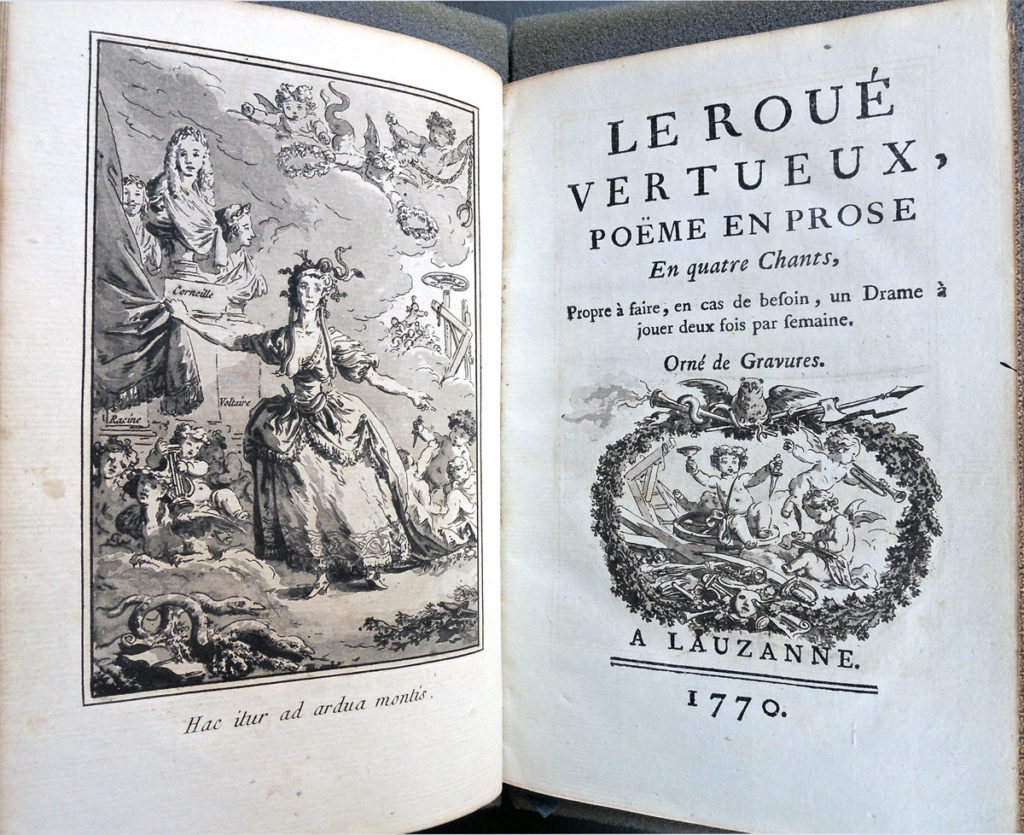
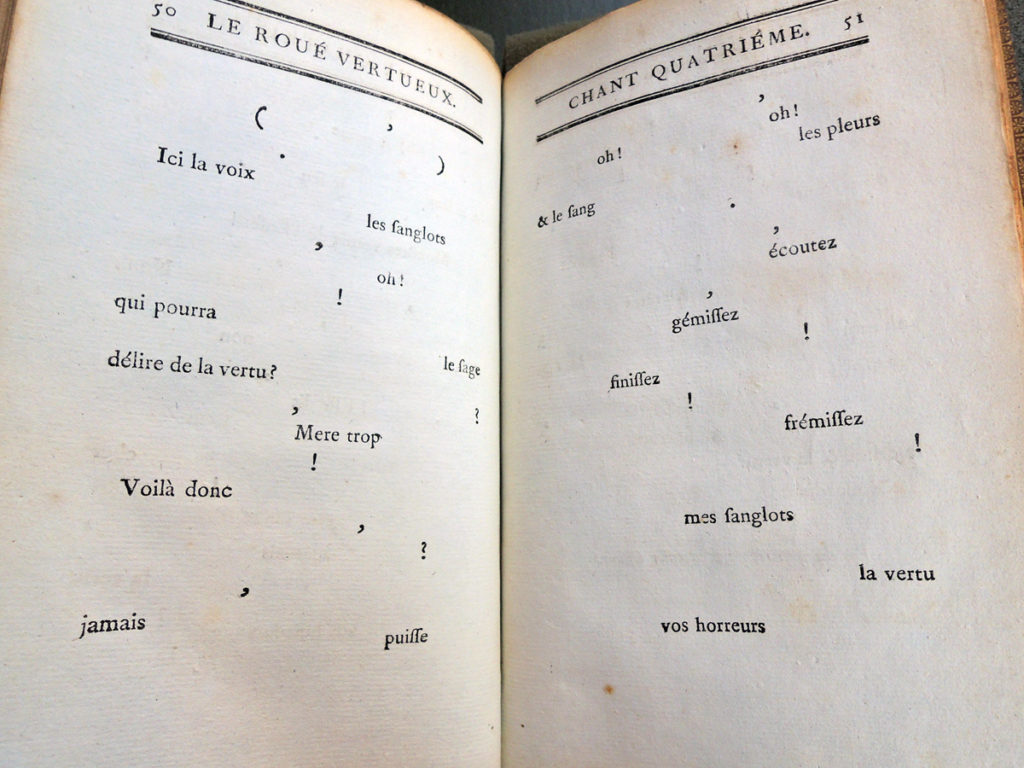

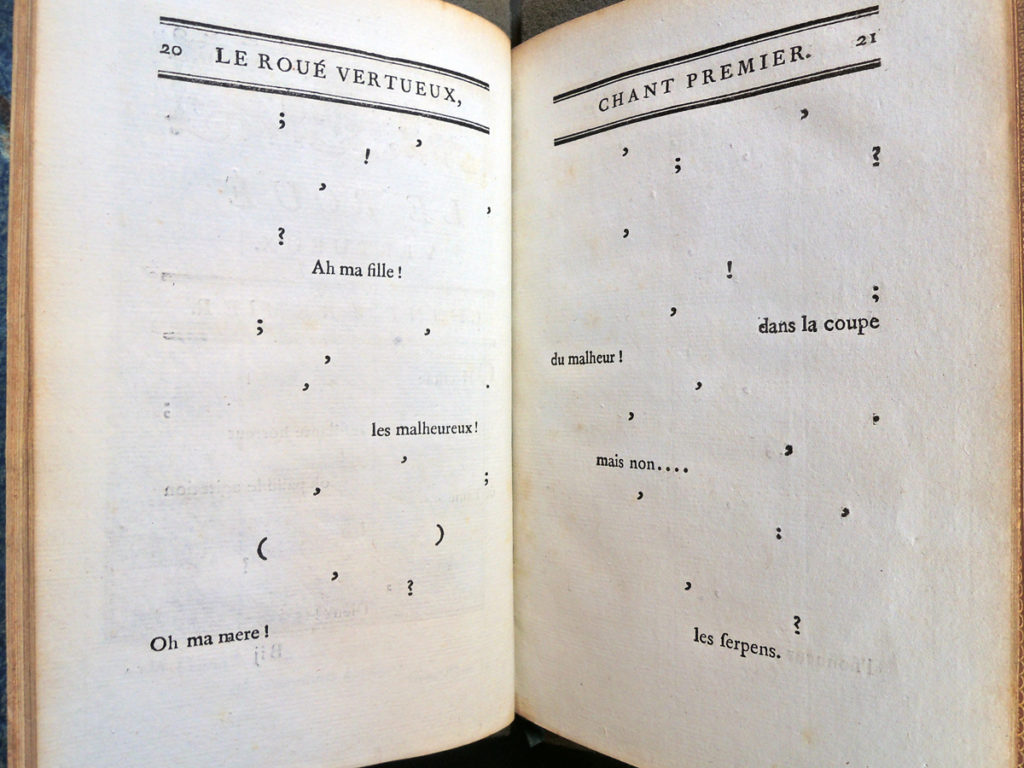


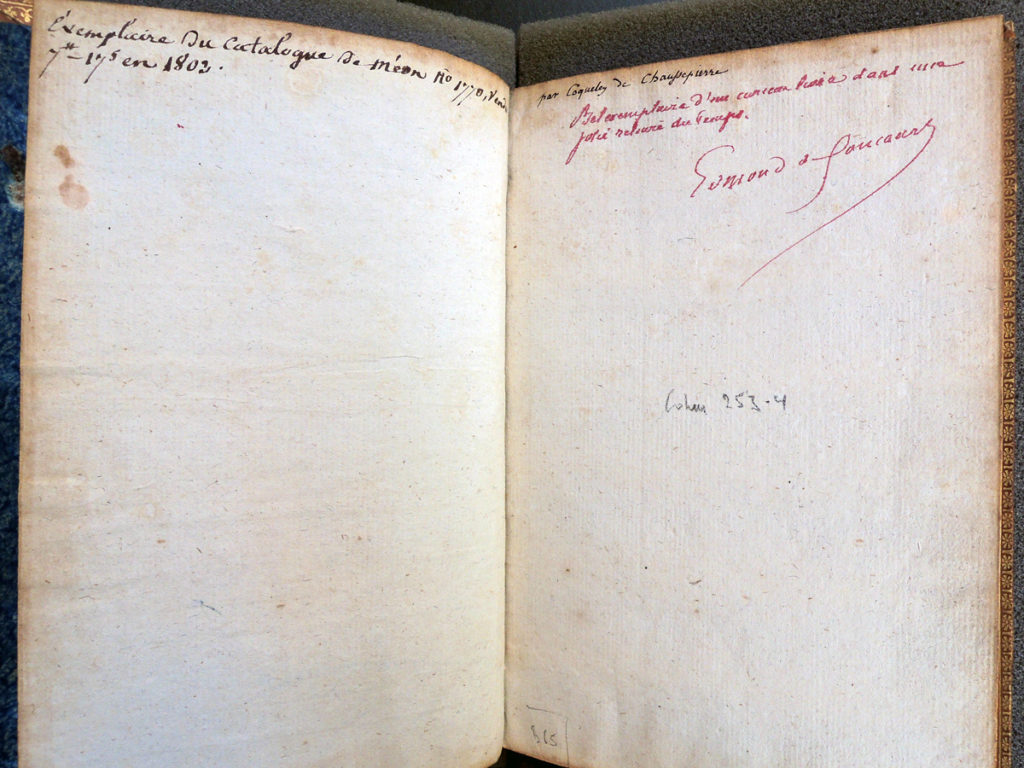
Pingback: Merkwaardig (week 15) | www.weyerman.nl